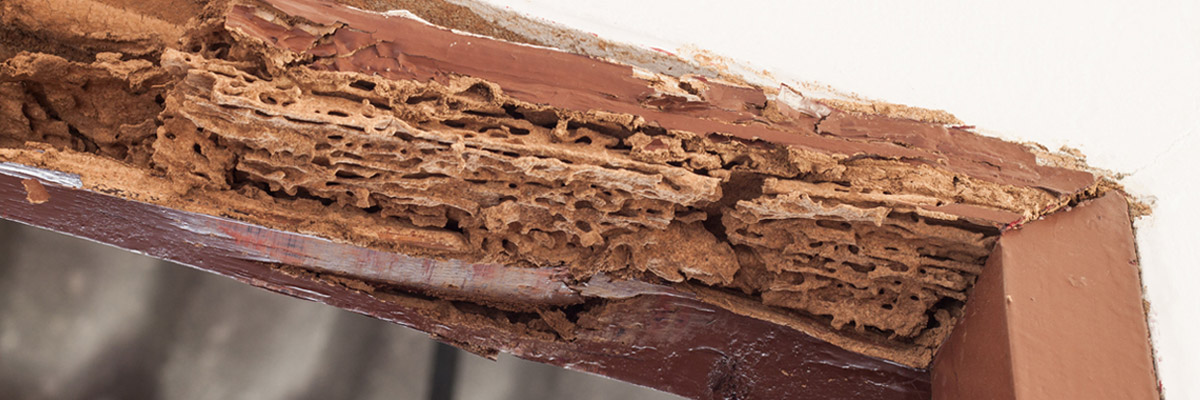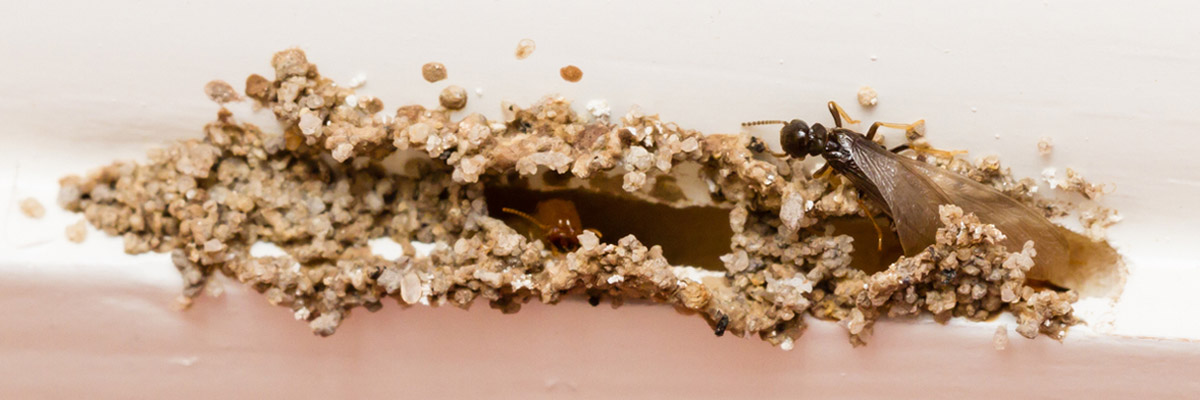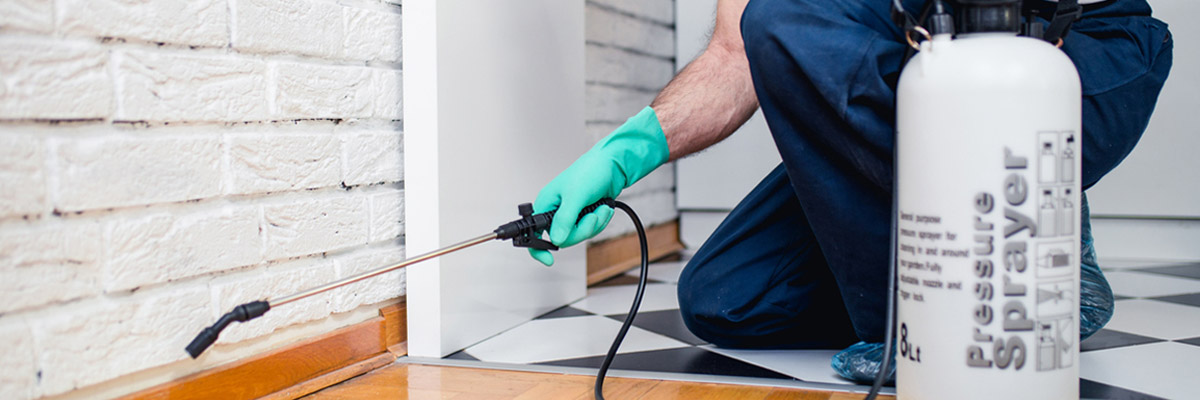Everything You Should Know About Termites with Wings
Do Termites Have Wings?
Termites have wings at the point in their life cycle when they’re sexually mature. When the termites reach this stage, they grow wings and swarm out of their current termite colony to find a mate. After they successfully find a mate, they shed their wings and begin to start a new colony as king and queen termites. Other termites in the colony are worker termites, who stay in the same colony without leaving since they’ve already passed sexual maturity.
Termites enter the winged reproductive stage when they’re about three or four years old, but they don’t remain flying for very long at all. In fact, the termites usually lose their wings after their very first flight since they need to be able to begin their new nests on the ground.
Are Winged Termites Dangerous?
If you see termite swarmers, it can be very alarming. Since they leave their nest in such a large mass, it can look intimidating to see so many flying termites together at once. However, the flying termite swarm poses no danger to humans. The termites don’t bite, and they’re looking for mates rather than somebody to terrorize.
The biggest danger that flying termites pose is that they’re the sign of a big problem. If you see a flying termite swarm, it usually means there’s a nest nearby and that your property could be in danger of housing more nests once the swarmers mate and lose their wings. The biggest threat of these termites is the potential damage to your home, which could end up costing hundreds of dollars.
When a termite colony chooses to nest on your property, they’ll slowly eat through the wood around your home, including your foundation and possibly even furniture. The cost to get rid of them is one factor, but you’ll also need to spend hundreds on fixing and reinforcing the damage that they cause.

It’s easy to find providers in your area
Searching with your zipcode will provide you with local pest control services.
Where Do Flying Termites Come From?
Many people report that they see flying termites after rainfall. While this is common, it’s not necessarily the rain that’s causing the termite swarm. Once termites have reached their sexually mature life cycle phase, they leave the nest during Spring. Specifically, they wait for warm and humid temperatures before they swarm.
If you see a termite swarm, they’re either coming from a nest nearby or your own home. They should signal you to complete a full termite inspection in your home. If you can verify that there isn’t a colony near your home, it’s still important to protect against new colonies. The swarmers are a sign that they’ll be mating soon and looking for areas to form new nests.

How to Identify Termites With Wings
Flying termites swarm around the same time that other winged insects are thriving and mating - during springtime when the climate is mostly warm and humid. Since they’re so small, it can be easy to get them confused with different types of flying ants.
To tell the difference between termites and winged ants, try to catch a good glance at one of them while they’re nearby. An ant has a slightly larger, tapered body, while termites have slim, straight bodies. Termites’ wings will also be straight and a similar length, while ants will have wings that point slightly outward.
Another way to identify flying termites without actually seeing them is if you see clusters of discarded wings near your windows. These are signs of termites that probably mated nearby and found their way inside your home to start their new nest.
If you’ve seen a swarm but weren’t able to identify the termites on the spot, keep an eye out for other signs of termite infestation. For Drywood termites, this might include small piles of wood shavings as they tunnel from the inside out. Subterranean termites show evidence of their presence through mud tubes. You might see these extending from the ground and built up over the concrete around your home or the wood foundation closest to the ground. The termites create these tubes out of their body waste, saliva, and dirt in order to travel from their colony in the ground upward to structures on the surface.
Termites enter the winged reproductive stage when they’re about three or four years old, but they don’t remain flying for very long at all. In fact, the termites usually lose their wings after their very first flight since they need to be able to begin their new nests on the ground.
How Do I Get Rid of Termites?
If you’ve identified any type of termite presence, whether it’s swarms, wings, tubes, or damage, it’s time to call a professional pest control company. Termites in your home are a serious problem that can’t easily be taken care of on your own. Instead, you’ll need proper termite control and damage mitigation.
Companies like Terminix will come into your home and do a full inspection before recommending a customized treatment. Pest control technicians are trained to locate the termite nest, assess how big it is, and also identify how much damage has been done. After the inspection is complete, they’ll be able to suggest a method for treatment.
Termite treatment methods include chemical and non-chemical methods. If you’d rather not use chemicals around your home, you can request that through your termite technician. However, chemical treatments may be necessary to get rid of the problem as fast as possible and prevent more money out of your pocket for retreatments and damage control.
Non-chemical methods include physical barriers, moisture removal, and heat treatment. Physical barriers and moisture removal work to make your home uninhabitable for termites so they’re forced to go elsewhere, while heat treatments can kill off termites using extreme temperatures.
If your pest control company decides to use chemical methods, this may come in the form of bait stations, termiticide, gas fogging, or soil treatment. Sometimes a technician will recommend using multiple methods at once to kill off the termites as quickly and effectively as possible.

Prevent Against All Types of Termites
When it comes to termites, the best thing you can do is protect your home against them. Flying termites might seem like a nightmare, but they’re no threat if your home is made unhabitable to them.
To prevent a termite problem, working with a professional pest company is one of the best things you can do. The company’s technicians will provide annual termite inspections to make sure your home is secure. Not only will they check for signs of termites, but they’ll also let you know if your house is showing signs of vulnerability, like too much moisture near the foundation. The cost of preventative measures is nothing compared to the cost that it could be to remove an entire colony and pay for your home structure to be fixed and reinforced.
On your own, you can help keep your home safe by paying attention to the amount of moisture near the ground. If heavy rains tend to cause drainage near your foundation, it’s best to invest in some new landscaping that allows the water to drain outward from your property. You should also periodically check your plumbing to make sure there aren’t any leaks near the ground. Any additional moisture will attract termites since it leads to softer wood that they’re able to chew through.
